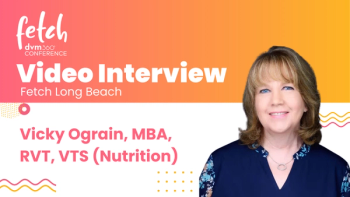
- dvm360 July 2020
- Volume 51
- Issue 7
The right task at the right time
A simple process for managing an overwhelming to-do list can make you more productive — and less stressed — in no time.
Between the luxury of being retired for years and the recent months of pandemic-mandated shutdown and relative isolation, I find myself in a virtual twilight zone of unstructured time. COVID-19 and the resulting lack of demands on my time should see me scratching things off my to-do lists like a honey badger but, alas, that has not been the case. As they say, the volume of work expands to fill the time available.
When I moved to Anguilla, I brought with me a short list of commitments for self-improvement and making the best of my life experience. I have always wanted to learn to play the piano, for example. This was my chance, but my plans remain unrealized. Then I planned to learn French. I even paid for several online courses as proof of my intention. No results there either. Finally, I planned to write a book. I’m not talking about the great American novel, mind you, maybe more of a memoir. I started several iterations, but the spirit was weak and butt glue even weaker. Needless to say, no book is in the offing. In fact, none of my ideas have taken serious root.
The dozens of projects that consumed my time proved mostly to be little more than enjoyable distractions. There was always something more pressing to do. Add to that the time devoted to landscaping, and house care and maintenance, and my to-do list is always long.
Not all of my days have been ill spent, of course. How could anyone complain about living in paradise? My wife and I are passionate about travel. In fact, our month-long trip to Europe was cancelled because of COVID-19. So, for the time being, we remain in Anguilla, separated from family and friends because we cannot return to the U.S.
During one of our near-daily phone chats, I commiserated with my son about my lack of accomplishments. On top of being an executive in an international corporation, he always seems to be finishing some project in his workshop or around his yard, so I asked, “How do you do it all?” His response intrigued me: “The key is to do less, not more. Sounds like you could use Kanban.” So, at my son’s suggestion I started on a path to learning a new perspective on time management.
What is kanban?
Kanban is a production management concept developed by Toyota in the late 1940s that subsequently led to the just-in-time model of task management. The name comes from the Japanese word for "sign." In the kanban system, each shipment of parts used to make cars comes with a “kanban,” or sign, that is sent to suppliers when the parts are nearly exhausted. The supplier then ships new parts to the assembly line. Kanban stresses that the key to maximum output is to focus on the task at hand.
In 2011, productivity experts Jim Benson and Tonianne DeMaria Barry wrote
It’s easy to get lost in the jumble of tasks we need to accomplish every day and the many aspects of our lives that compete for our time. Often, the longer the to-do list, the more difficult it is to know which tasks to tackle first. Without proper planning, we often dedicate our time to less-important tasks instead of focusing on what really needs our attention.
A flexible, actionable, achievable way of looking at your workload and limitations, personal kanban has two basic mandates:
- Visualize your work, so that at any time you can look at your overall workload and determine quickly what you should work on next.
- Limit your workload at any given time, and restrict demands on your time. These two simple acts help us improve the way we work and the way we make choices to balance our personal, professional, and social lives.
Focus on “less is more”
To be truly productive, we must realize there are limits to what we can do and focus our efforts on fewer projects. We can still have a list of projects and goals, but we must set realistic expectations for completing them.
A kanban board is the mechanism used to organize — and accomplish — tasks. A kanban board is a simple chart with three vertical columns: To-Do, Doing, and Done. In the "doing" column, place all of the tasks you're either working on now or plan to work on immediately. Ideally, the tasks are further organized by priority, so you can glance at them at any time and see which ones to tackle first. In the "to-do" column, list all the tasks you aren't working on right now but need to get to at some point. The "done" column lets you see at a glance how much work you have completed and keeps you motivated to do more.
Once you have your board complete, follow these steps:
- Identify two or three important items on your to-do list. Do not add anything else to this list until a task can be marked off as completed.
- Focus your energy and complete target projects, then move on to the next thing on your list.
- As you finish each task, move them from the doing column to the done column.
Kanban hinges on the fact that you must know not only your destination but where you are now. By limiting how much unfinished work is in process, you can also avoid problems caused by distraction, conflicts over your time, and task switching.
That’s all there is to it. Personal kanban can help you achieve your goals by helping you manage personal planning. Now, about that memoir…
Dr. Mike Paul is the former executive director of the Companion Animal Parasite Council and a former president of the American Animal Hospital Association. He is currently the principal of MAGPIE Veterinary Consulting. He is retired from practice and lives in Anguilla, British West Indies.
Articles in this issue
over 5 years ago
I like big blocks and I cannot lieover 5 years ago
Why are there so many different models for COVID-19?over 5 years ago
Vector-borne disease prevalence in dogs with proteinuriaover 5 years ago
Modulating the immune system to fight for goodover 5 years ago
FDA OKs cell therapy clinical trial for feline gingivostomatitisover 5 years ago
Hillbilly beardover 5 years ago
Can dogs be used to screen for COVID-19?over 5 years ago
Can pandemic rules be broken?over 5 years ago
What at-will employment means for veterinariansover 5 years ago
New study lays groundwork for heartworm vaccine developmentNewsletter
From exam room tips to practice management insights, get trusted veterinary news delivered straight to your inbox—subscribe to dvm360.





